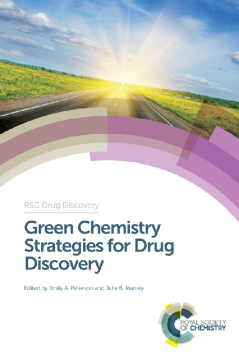
Additional Information
Book Details
Abstract
The incorporation of Green Chemistry is a relatively new phenomenon in the drug discovery discipline, since the scale that chemists operate on in drug discovery is smaller than those of process and manufacturing chemistry. The necessary metrics are more difficult to obtain in drug discovery due to the diversity of reactions conducted. However, pharmaceutical companies are realizing that incorporation of green chemistry techniques at earlier stages of drug development can speed the development of a drug candidate.
Written by experts who have pioneered green chemistry efforts within their own institutions, this book provides a practical guide for both academic and industrial labs wanting to know where to start with introducing greener approaches for greatest return on investment.
The Editors have taken a comprehensive approach to the topic, covering the entire drug discovery process from molecule conception, through synthesis, formulation and toxicology with specific examples and case studies where green chemistry strategies have been implemented. Emerging techniques for performing greener drug discovery chemistry are addressed as well as cutting-edge topics like biologics discovery and continuous processing. Moreover, important surrounding issues such as intellectual property are included.
This book serves as a practical guide for both academic and industrial chemists who work across the breadth of the drug discovery discipline. Ultimately, readers will learn how to incorporate green chemistry strategies into their everyday workflow without slowing down their science.
The editors present a comprehensive selection of expert opinions regarding how sustainable and less hazardous methods can be successfully integrated into drug discovery. The authors avoid abstract considerations of green chemistry implementations, instead providing valuable practical examples and focusing on routine methods used in the laboratory. The book comprises 13 chapters covering various aspects of drug discovery with relevance for scientists working in R&D and related fields. In conclusion, the book provides useful background and practical information about green chemistry implementation for scientists in R&D. A significant part of the book, with helpful examples and valuable experiences, is directly addressed to medicinal chemists. Additional content, covering related fields of drug discovery contains information beyond the chemistry and rounds off the book for a broader readership.
Dr Christoph Nitsche, Heidelberg University
This book is useful not only for chemists and chemical engineers working in academia or industry, but also for undergraduate, graduate and PhD students. The interest in this book will not be limited to those interested in the development of pharmaceuticals, but general organic chemists may also profit from the rich knowledge of this book.
György Keglevich, Budapest University of Technology and Economics
